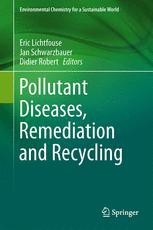resumo
Human activities are producing and transforming more than 140,000 chemical compounds according to the European Union Regulation REACH (registration, evaluation, authorization and restriction of chemicals). Humans and wildlife can be exposed to chemicals at all stages of the chemical life cycle: raw material extraction, manufacturing and processing, use, recycling or disposal. Some chemicals can mimic or antagonize hormone action, affecting the normal functioning of organisms. These chemicals, defined as endocrine disruptors, include among many other organotin compounds. Organotins are the most widely used organometallic compounds for agricultural, industrial and biomedical applications with an annual production of about 60,000 tons. The most notorious organotin is tributyltin, a potent biocide used in antifouling paints. Tributyltin has adverse and even bizarre effects, such as imposex, on aquatic organisms. Tributyltin, derivatives and to a lesser extent other classes of organotins are found in all compartments of the aquatic environment due to the intensive use of organotins for the protection of ships hulls and other immersed structures. The lowest concentrations are found in the water column, whereas the highest are detected in sediments and biota, particularly in top predators. Humans are highly exposed because they consume top predators and other fishes and shellfish. Tributyltin became thus a well-known example of how chemicals can have a global detrimental effect on the environment, even to the eyes of public opinion. Organotins include also tributyltin derivatives (dibutyltin, monobutyltin), phenyltins (triphenyltin, diphenyltin and monophenyltin), octyltins (trioctyltin, dioctyltin and monooctyltin) and methyltins: trimethyltin, dimethyltin and monomethyltin. They are employed as biocides, polyvinyl chloride (PVC) stabilizers and industrial catalysts for the manufacture of silicone and polyurethane foams. Such diverse industrial applications imply their presence on our everyday lives in clothes, pillows, toys, wallpaper, plastic food containers, pipes including drinking water mains and household piping, medical devices and breast implants. Hence, humans are exposed to organotins not solely through ingestion of contaminated food but also by inhalation and ingestion of dust and through direct contact with treated products. As a consequence, organotins have already been detected in human samples and toxicity data reveals that they are endocrine disruptors, imunotoxicants and carcinogens. Moreover, a link to obesity was recently established. We review the levels, fate and effects of organotin compounds towards wildlife and humans, starting with a description of organotin applications, with particular incidence in antifouling paints. The need to develop antifouling strategies is presented and the history on the use of tributyltin as the active biocide described. The global contamination of the marine environment and the deleterious effects of tributyltin towards non-target organisms are addressed. Particular attention is drawn to the imposex phenomenon, with an historical perspective and a brief explanation on the induction mechanisms proposed. A case study of imposex in a sentinel species – Nassarius reticulatus – is also presented. The restrictions on tributyltin use in antifouling paints are also described alongside with the new regulations for other organotins used in consumer products. The sources and pathways of organotins in the environment are briefly addressed and an overview of marine environmental levels is provided alongside with references to regional and global monitoring surveys. At last, studies in human exposure to organotins are presented, a thorough review on human tissues burdens is performed and future research is proposed.
autores
Sousa ACA, Pastorinho MR, Takahashi S, Tanabe S



